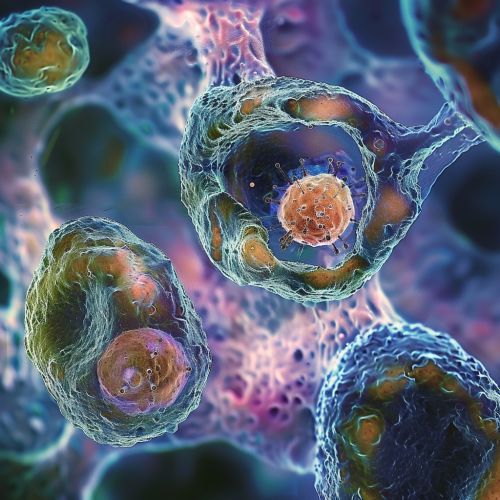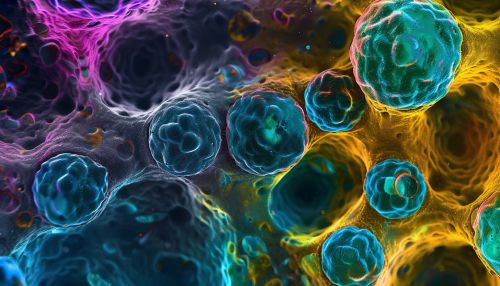Tissue homeostasis
Introduction
Tissue homeostasis refers to the dynamic process by which tissues maintain their structure, function, and cellular composition over time. This process involves a balance between cell proliferation, differentiation, and apoptosis, ensuring that tissues can adapt to physiological demands and repair damage. Tissue homeostasis is crucial for the proper functioning of organs and the overall health of an organism.
Mechanisms of Tissue Homeostasis
Tissue homeostasis is regulated by a complex interplay of cellular and molecular mechanisms. These mechanisms include:
Cell Proliferation
Cell proliferation is the process by which cells divide and multiply. This is essential for tissue growth, repair, and regeneration. The cell cycle, which consists of interphase (G1, S, and G2 phases) and mitosis, is tightly regulated by various cell cycle checkpoints and signaling pathways. Key regulators include cyclins, cyclin-dependent kinases (CDKs), and tumor suppressor proteins such as p53.
Cell Differentiation
Cell differentiation is the process by which unspecialized cells become specialized in structure and function. This is crucial for the formation of different tissue types. Differentiation is regulated by transcription factors, epigenetic modifications, and signaling pathways such as the Wnt, Notch, and Hedgehog pathways.
Apoptosis
Apoptosis, or programmed cell death, is a mechanism by which cells undergo an orderly and controlled death. This process is essential for removing damaged or unnecessary cells and maintaining tissue homeostasis. Apoptosis is regulated by pro-apoptotic and anti-apoptotic proteins, such as members of the Bcl-2 family, and executed by caspases.


Stem Cells and Tissue Homeostasis
Stem cells play a pivotal role in maintaining tissue homeostasis due to their ability to self-renew and differentiate into various cell types. There are two main types of stem cells involved in tissue homeostasis:
Embryonic Stem Cells
Embryonic stem cells (ESCs) are pluripotent cells derived from the inner cell mass of the blastocyst. They have the ability to differentiate into any cell type in the body, making them a valuable resource for regenerative medicine and tissue engineering.
Adult Stem Cells
Adult stem cells, also known as somatic or tissue-specific stem cells, are multipotent cells found in various tissues. They are responsible for the maintenance and repair of their respective tissues. Examples include hematopoietic stem cells in the bone marrow, mesenchymal stem cells in the connective tissues, and neural stem cells in the brain.
Signaling Pathways in Tissue Homeostasis
Several signaling pathways are crucial for regulating tissue homeostasis:
Wnt Signaling Pathway
The Wnt signaling pathway is involved in regulating cell proliferation, differentiation, and apoptosis. It plays a critical role in embryonic development and the maintenance of adult tissues. Dysregulation of Wnt signaling can lead to various diseases, including cancer.
Notch Signaling Pathway
The Notch signaling pathway is essential for cell fate determination, differentiation, and tissue patterning. It is involved in the regulation of stem cell maintenance and differentiation in various tissues.
Hedgehog Signaling Pathway
The Hedgehog signaling pathway is crucial for embryonic development and the regulation of stem cell populations in adult tissues. It plays a role in tissue patterning, cell proliferation, and differentiation.
Tissue Homeostasis in Different Organs
Tissue homeostasis mechanisms can vary significantly between different organs and tissues:
Skin
The skin is a dynamic organ that undergoes constant renewal. Keratinocytes, the primary cell type in the epidermis, are continuously produced by basal stem cells and migrate towards the surface, where they undergo terminal differentiation and are eventually shed.
Intestine
The intestinal epithelium is one of the most rapidly renewing tissues in the body. Intestinal stem cells located at the base of the crypts of Lieberkühn give rise to various differentiated cell types, including enterocytes, goblet cells, and Paneth cells.
Bone Marrow
The bone marrow is the primary site of hematopoiesis, the process by which blood cells are produced. Hematopoietic stem cells (HSCs) in the bone marrow differentiate into various blood cell lineages, including red blood cells, white blood cells, and platelets.
Brain
Neural stem cells in the brain are responsible for the maintenance and repair of neural tissues. These stem cells are primarily located in the subventricular zone and the hippocampus and can differentiate into neurons, astrocytes, and oligodendrocytes.
Dysregulation of Tissue Homeostasis
Dysregulation of tissue homeostasis can lead to various pathological conditions:
Cancer
Cancer is characterized by uncontrolled cell proliferation and resistance to apoptosis. Mutations in genes that regulate the cell cycle, apoptosis, and signaling pathways can lead to the development and progression of cancer.
Degenerative Diseases
Degenerative diseases, such as Alzheimer's and Parkinson's disease, are associated with the loss of specific cell types and the failure of tissue homeostasis mechanisms. These conditions often involve the accumulation of damaged proteins and impaired cellular functions.
Fibrosis
Fibrosis is the excessive accumulation of extracellular matrix components, leading to tissue scarring and impaired function. It can result from chronic inflammation, injury, or dysregulation of tissue repair mechanisms.
Therapeutic Approaches to Restore Tissue Homeostasis
Various therapeutic approaches aim to restore tissue homeostasis in pathological conditions:
Stem Cell Therapy
Stem cell therapy involves the transplantation of stem cells to replace damaged or lost cells and restore tissue function. This approach has shown promise in treating conditions such as spinal cord injuries, myocardial infarction, and degenerative diseases.
Gene Therapy
Gene therapy aims to correct genetic defects or modulate gene expression to restore normal cellular functions. Techniques such as CRISPR-Cas9 and viral vectors are used to deliver therapeutic genes to target cells.
Tissue Engineering
Tissue engineering combines cells, biomaterials, and bioactive molecules to create functional tissue constructs for transplantation. This approach holds potential for regenerating damaged tissues and organs.
Conclusion
Tissue homeostasis is a fundamental process that ensures the maintenance and proper functioning of tissues throughout an organism's life. It involves a delicate balance between cell proliferation, differentiation, and apoptosis, regulated by various signaling pathways and stem cell populations. Dysregulation of tissue homeostasis can lead to a range of diseases, highlighting the importance of understanding and manipulating these mechanisms for therapeutic purposes.
